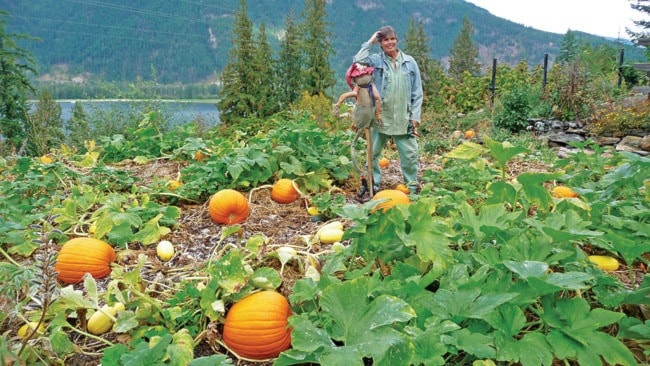Like every gardener, I tried a couple of new things this year and some things worked and some things didn’t. It’s all a learning curve and we take it in stride.
In the spring, I had spread a thick layer of leaf mould onto my garden beds, which was great for the soil food web and holding the moisture in. However, I had an unusual year in that I was away most of the summer, and it had dried out under that mulch layer. I had to get down on my knees and hand water every inch of soil under that mat of leaves to get the ground wet again, which was a huge and time-consuming task. So next year, I will make sure I have a drip system under the mulch or spread a layer of compost instead, which will allow the water to penetrate a little better.
My flower pots were heavily mulched with leaf mould, which worked great to retain the moisture content and my flowers enjoyed a natural fertilizer. I’ll be doing that again.
My instructor at the Gaia College taught us to place a couple of layers of branches in our compost heap in order to provide spaces for oxygen to increase the microbial activity. That turned out to be a hassle when I wanted to flip it, because they got caught in my pitch fork and they were hard to remove. This year I am putting a layer or two of big pinecones in it, which hopefully will do the job instead. I’ve increased my composting capacity by building four more bins to make plenty of soil for both the spring and fall seasons, and I encourage you all to do the same. You can never have enough organic material around.
My giant lasagna beds produced a bumper crop of pumpkins and squash. Once I had completed all my layers of materials, I dug out some holes and filled it with beautiful, wormy soil I had rescued from an abandoned compost heap in the woods and planted the seeds in them. Between that soil and the warm composting action happening all around it, the plants just went crazy. Yummy.
My tomato beds also had the benefit of this wormy, rich soil and they were just hanging with delicious red fruit. I’ll be hunting around for more of that stuff next year, that’s for sure.
So again, get ready to collect all these leaves that are beginning to fall to the ground – you can never have too many. If they’re dry, run them over with your lawn mower first so they’ll compost easier, or put them through the yard chipper. Your lawn will benefit as well to have a little natural fertilizer for the winter.
If you can, collect all your flower seeds that you don’t want throughout the growing season and sprinkle them around vacant lots and grassy areas along the roadside where it doesn’t get mowed. A wild floral display is always a treat for the passersby and the pollinators appreciate the extra food. If you have any extra goodies from the patch, share them with the food bank or the senior’s centre, who are very appreciative of people’s generosity.
